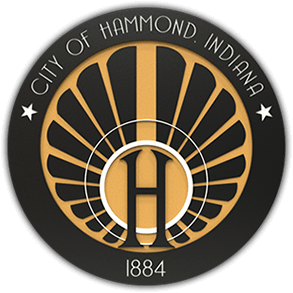June 14, 2014 – By Keith Benman
Bicycle/pedestrian bridges on a grand scale are popping up across Northwest Indiana, changing the look and feel of a region best known in the past for big industrial plants belching smoke and not so much for healthy living.
“These will brand the region in a positive way, showing Northwest Indiana also has a healthy lifestyle change going on,” said Martin Olesky, of Wingman Communications and Branding. “There is so much changing about the region.”
Two bicycle/pedestrian bridges to open this summer in Hammond will span three of its busiest arterials. A third one on the Munster/Hammond line will span the Little Calumet River. And Valparaiso opened a combined highway/bicycle/pedstrian bridge in late 2012 after it underwent a radical redesign to accommodate non-motorized traffic.
These bicycle/pedestrian bridges are different than the ones of the past. Some of those from a earlier era were constructed of timbers and others of metal girders and braces that tended to rust. Aesthetics were obviously not part of the designer’s game plan, and bicyclists usually had to dismount to cross.
The new-design bridges feature wide lanes that can comfortably accommodate bicycles passing in both directions along with pedestrians. They have long ramps that bicyclists can easily climb without dismounting. Bicycle logos, place names and other ornamentation clearly identify them. Many have overhead or other lighting.
The granddaddy of the current generation of bicycle/pedestrian bridges in Northwest Indiana is the one connecting the Lake George and Whiting Lakefront trails over Indianapolis Boulevard and New York Avenue in Hammond, according to Mitch Barloga, active transportation planner with the Northwestern Indiana Regional Planning Commission. It was opened in 2012 and cost $4.1 million.
“That was the most elaborate, the most aesthetically pleasing, and the first landscaped one as well,” Barloga said. “So that bridge was first in many ways.”
The new generation of bridges definitely make a striking impression and make Northwest Indiana’s network of bicycle/pedestrian trails more noticeable, according to Larry Galler, of Larry Galler & Associates, a marketing and management consultant.
Some might see them as an antidote to Northwest Indiana’s industrial past, but they actually can serve as an important window to that past and might be promoted as such, Galler said.
“I think it’s fascinating,” Galler said. “I love driving along and seeing the industrial facilities. It’s part of the muscular infrastructure of our world and region.”
The bridges’ visibility can point people to the outdoor activities of biking and hiking, which are already giving a boost to economic development in the region, said Orlesky, who also is a host for Lakeshore Public Television’s “Ad Men.”
He cites the Monday night “Pint Rides” from the Trek Bicycle Store on U.S. 30 to Crown Brewing in Crown Point, which attracts about 150 riders as a prime example of how the trails can connect customers and businesses.
Valparaiso Mayor Jon Costas said bicycles and pathways are a core part of the city’s economic development efforts. That’s why he and other city officials urged INDOT to modify the proposed highway bridge over Ind. 49 at the Vale Park Road interchange.
The redesign eliminated a traffic lane in each direction but added an eight-foot-wide bicycle/pedestrian pathway. It also lopped millions of dollars off the cost.
“Clearly, seeing these things makes people think about using them,” Costas said. “If you are driving down the road and see a bridge or well-groomed pathway system, you might think maybe next time I should bring my bike.”

